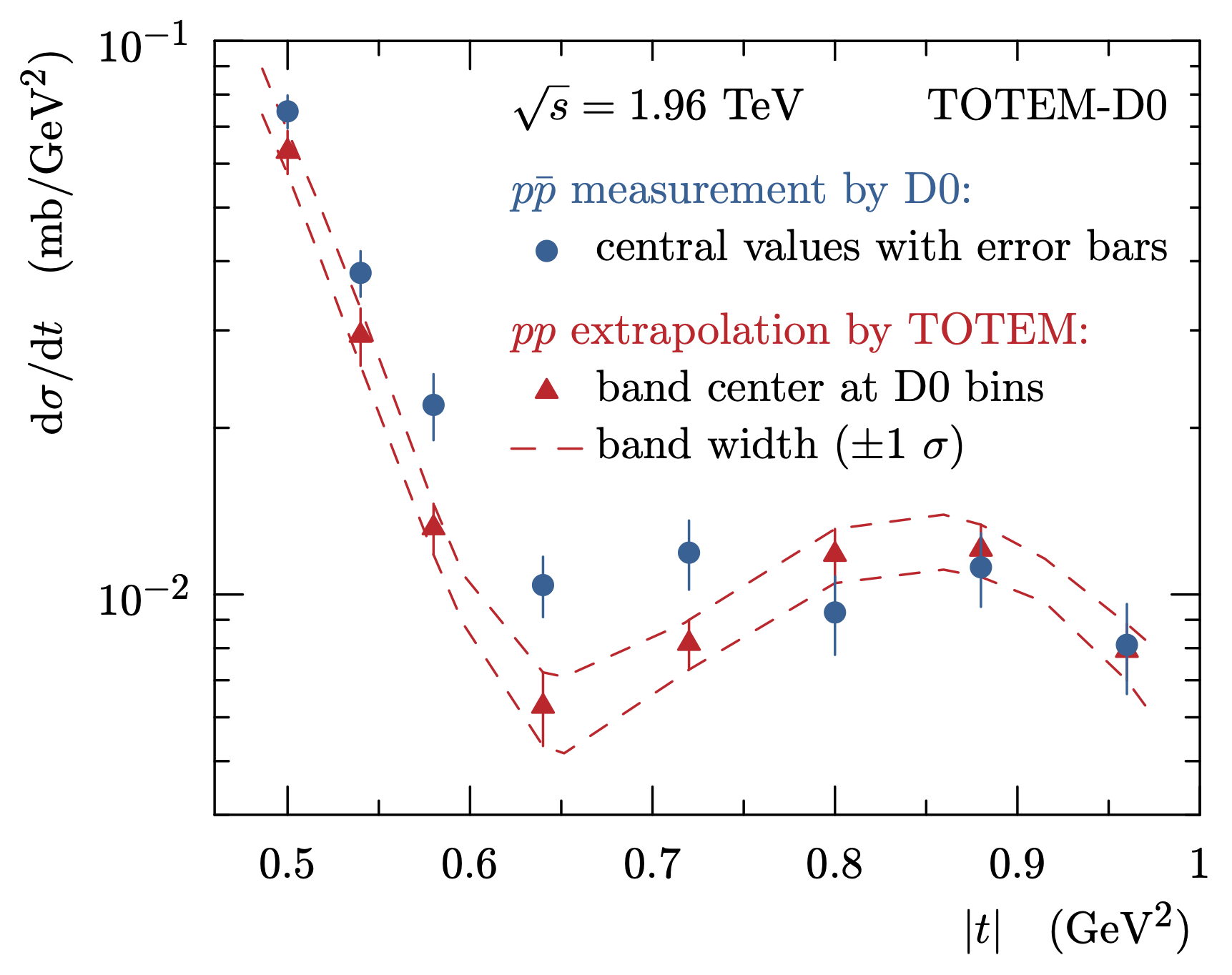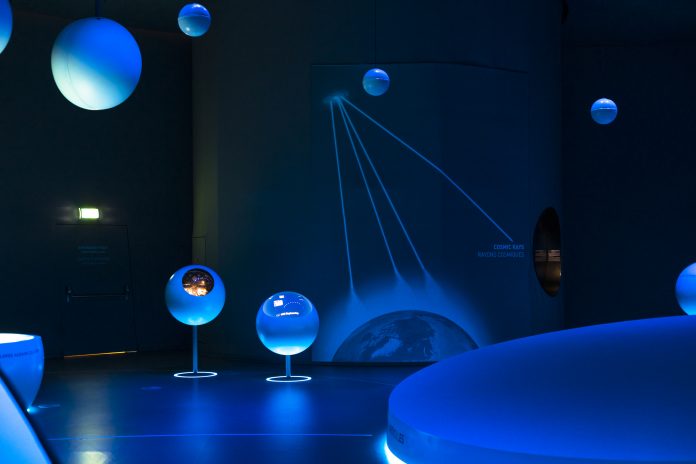Here, Katri Huitu and Kenneth Österberg from the Helsinki Institute of Physics, Finland, discuss an important discovery of the Odderon and related activities of the Institute searching for the secrets of new particles and fundamental laws of Nature
The Helsinki Institute of Physics (HIP) successfully coordinates Finland’s research with CERN, the European Organization for Nuclear Research, in Geneva, Switzerland and contributes to FAIR, the Facility for Antiproton and Ion Research, currently being constructed in Darmstadt, Germany. HIP is a national institute and organisation operated by five major Finnish universities in geographically separate cities: Helsinki, Jyväskylä, Espoo, Tampere and Lappeenranta. In addition, since 2018, the Radiation and Nuclear Safety Authority is an interim member.
Research at HIP
The extensive expertise related to sub-atomic research from all involved institutes is fully utilised in HIP, which covers a continuum of research topics from theoretical physics, physics analyses of collider experiments, experimental setups and instrumentation, as well as technology development and applications.
Currently, the main research focus of HIP at CERN is on three of the Large Hadron Collider (LHC) experiments: ALICE, CMS and TOTEM, where Finnish scientists contribute significantly to ultra-relativistic heavy-ion physics, new physics searches, standard model measurements and forward physics. The full physics exploitation of these, including the preparation of their high-luminosity phase, constitutes the highest priority of the Finnish high energy physics community. HIP Detector Laboratory supports the detector R&D and the experimental upgrades. Computing and data access are an integral part of this physics exploitation. HIP participates in the Worldwide LHC Computing Grid through the Nordic and HIP centres.
HIP is also involved in other CERN experimental activities, such as ISOLDE, which provides radioactive ion-beams, and CLOUD, where climate change can be studied in a controllable laboratory environment. HIP is also actively contributing to two conceptually different designs of the post-LHC particle colliders at CERN, namely the Compact LInear electron-positron Collider (CLIC) and the Future Circular Collider (FCC).
The Standard Model
A major discovery at CERN was the Higgs boson in 2012. It completed the particle set of the Standard Model such that after the Higgs discovery the theory is internally consistent. HIP researchers took part in the search for the Higgs boson, and are studying its properties further. The Standard Model is not the whole story. It is well known that to explain the Dark Matter of the Universe, more is needed. Also, contrary to the theory, the neutrinos are not massless. Thus, searching for physics beyond the Standard Model is one of the crucial tasks of HIP physicists, both from the experimental and theoretical point of view. An essential part of this work is to understand the consequences of the Standard Model better.
The quarks of the Standard Model, having a property called colour, form bound states, which are colour neutral. This is obtained by having all three colours or the colours cancelling, since the antiparticles of quarks have corresponding anti-colour. Good examples of such bound states are protons and neutrons. The LHC experiments have found tens of new such bound states. These quarks are bound together by the exchange of gluons, particles which mediate the strong interaction. The gluons have a curious property, it is expected that they can be bound together also by themselves, to form glueballs. Discovering glueballs is not easy, since it should be ensured that there are no quarks involved both at the production and decay of the glueball. So far there exists no firm experimental evidence for glueball particles.
TOTEM experimental activities
The TOTEM experiment is the leading forward physics experiment at CERN’s LHC. It focuses on the measurements of the total proton-proton interaction probability (“cross-section”) and elastic scattering, where the two protons only slightly change their direction in the collision. The distinct feature of TOTEM is the measurement of elastically scattered protons at very small scattering angles corresponding to distances of only a few mm from the outgoing beam far (210-220 m) from the collision point.

probability”) at 1.96 Tera electron volt as function of the momentum transfer at the collision
that is proportional to the square of the proton or antiproton scattering angle due to the
interaction. Courtesy of the D0 and TOTEM collaborations
Professor Kenneth Österberg, the leader of the HIP TOTEM group, has been the Physics Coordinator of the CERN TOTEM experiment since 2008. He is leading the physics analysis work within this international collaboration consisting of about 90 physicists from eight countries. During the last few years, the focus of TOTEM has been to discover phenomena predicted in Quantum Chromodynamics (QCD), the quantum theory of strong interactions, but not yet observed like the Odderon and glueballs.
Discovery of Odderon
One has up to recently been able to describe high energy elastic proton-proton scattering by the combination of photons, the mediator of the electromagnetic force, and “Pomerons”, a combination of two gluons, where the colours of the gluons cancel each other, being exchanged between the two particles at the collision. However, already 50 years ago, theoretical physicists predicted the existence of an “Odderon” that in QCD corresponds to a similar colourless gluon combination but now consisting of three gluons. Contrary to the Pomeron, the Odderon interacts differently with the proton and its antiparticle, the antiproton.
By comparing the measurements of elastic proton-proton collisions at the LHC with the measurements of elastic proton-antiproton collisions at Fermilab’s Tevatron collider in the U.S. at the same energy, the TOTEM and Tevatron D0 experiments could observe that at some particular scattering angles, the probability of elastic scattering in proton-proton collisions was significantly different from the probability in proton-antiproton collisions. The only viable physics interpretation is that the two colliding particles were exchanging Odderons, instead of exchanging Pomerons as they normally do. This is the first experimental confirmation of the existence of the Odderon, whose existence the Standard Model of elementary particles is predicting.
Benefits for students
The next researcher generation gets invaluable experience in HIP projects about working at CERN, one of the largest and most respected research centres on Earth. On occasions like digging the Odderon from the vast amount of data, the excitement of new discoveries is felt. The skills that students learn in the cutting edge research of the large international laboratory are important also in working life elsewhere in society.
https://home.cern/news/news/physics/totem-and-do-collaborations-announce-odderon-discovery
Please note: This is a commercial profile
© 2019. This work is licensed under CC-BY-NC-ND.











